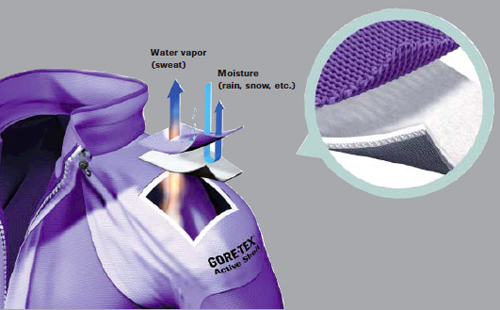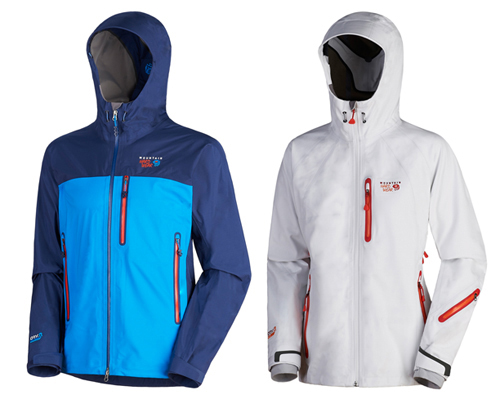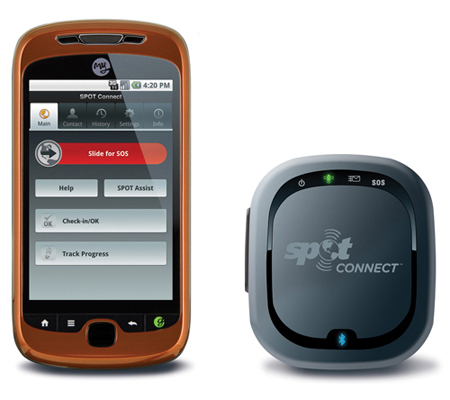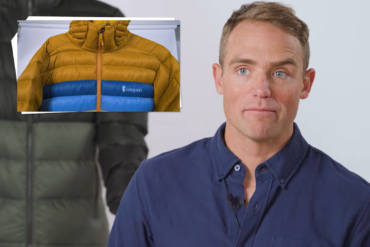GORE–TEX Active Shell — Touting a waterproof/windproof/breathable membrane that is half the weight of previous GORE–TEX versions, the company’s latest Active Shell fabric was a hit at OR. Arc’teryx, Mammut, The North Face, and other big names have hardshell jackets for 2011 based on Active Shell. How is it different from other GORE–TEX types? Active Shell is more breathable because the company removed an adhesive layer to increase water vapor (sweat) transfer rates. To differentiate it from other GORE–TEX versions, Active Shell jackets also have design criteria made by Gore to keep the garments set with features made for active pursuits, including articulation for sports like running, vents on the jackets, non-waterproof zippers, and hood-less designs. Some of the Active Shell pieces we saw on the show floor at OR were impressively thin, and several jackets — like the Adidas Terrex Active Shell, for one — were about as sporty as we’ve ever seen in the category of the hardshell. www.gore.com

MH Dry.Q — We’re awarding Polartec NeoShell and GORE–TEX Active Shell, and we’d be remiss not to give a nod to Mountain Hardwear as well. The company unveiled its proprietary Dry.Q hardshell technology at the OR show, and the resulting line of outerwear promises to be a force in 2011. To create the Dry.Q line, Mountain Hardwear partnered with the General Electric Company subsidiary that makes eVent, which is a highly-breathable hardshell fabric that’s been on the market for years. Like Polartec’s NeoShell — and unlike GORE–TEX — the proprietary Dry.Q fabric has a membrane that allows for air permeability, which Mountain Hardwear touts as dramatically increasing breathability and moisture transport. Other touted advantages to the line include a “unique combination of supreme quality face fabrics, barriers, backers, glues, tapes and lamination technology,” according to the company. www.mountainhardwear.com

SPOT Smartphone Connection — We covered this hot little pair on a post about gadgets at CES earlier this month. But the SPOT Connect device and application — touted to “turn smartphones into personal one-way satellite communicators” — was a hit at the OR Show and it made its outdoor-industry debut in Salt Lake. In short, with a free downloadable application and the SPOT Connect device (which wirelessly connects with a smartphone via the Bluetooth protocol) you’ll soon be able to link up to roving satellites and text, Facebook, or Twitter on your smartphone in deep wilderness and other areas where cell networks go dead. If ever needed, an emergency SOS message can be sent just like from a regular SPOT device. Bonus feature: The application will give the ability to send location-based text messages that are “geo-tagged” and viewable instantly on Google Maps. $169.99 (plus required subscription of $99.99 per year), www.findmespot.com

—Stephen Regenold is founder and editor of www.gearjunkie.com. For part I of the “Best in Show” awards, click here.





